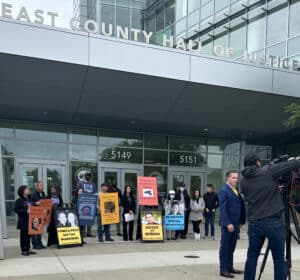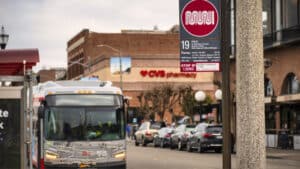Does Trail Immunity Apply On Bicycle Paths?
Written By Chris Dolan and Emile Davis
This week’s question comes from Cecilia from San Francisco, CA, who asks:
I was on a bike path riding the speed limit in San Francisco. There was a big pothole that I couldn’t see, and my front tire dropped in it and launched me over the top of my handlebars. Luckily, I wasn’t too badly injured, but my friend from a local bicycle coalition said I was lucky I wasn’t badly hurt because you can’t sue for a dangerous bike lane. Is he right? That doesn’t make any sense.
Dear Cecilia,
Thank you for your question about bicyclists’ rights on dangerous bicycle paths. This is an important safety consideration for all bicyclists.
Your question touches upon an important and evolving aspect of California law that has grown to affect certain bicycle paths. California Government Code Section 831.4 sets forth what is commonly called “trail immunity.” It makes California Government entities immune from suit under certain conditions. This legal provision grew from shielding government entities from lawsuits regarding dangerous natural reserve hiking trail conditions. However, the recent expansion of this law raises real concerns regarding its application to paved areas, including bicycle paths.
The original purpose of trail immunity was rooted in understandable logic and policy. It was crafted to encourage public access to outdoor recreational areas while limiting the financial burden on government entities to maintain trails. This makes sense in the context of rugged wilderness trails, where natural elements and lack of constant upkeep contribute to potential dangers.
However, in recent years, government entities have made the troubling push to extend the protections of trail immunity to encompass paved areas, including bicycle paths located within urban areas. Unfortunately, for cyclists, there has been some, but not absolute, expansion in the areas covered by trail immunity.
These expansions ignore the original purpose of trail immunity. Unlike wilderness trails, bicycle paths within city limits are generally considered safer and more regulated. Cyclists utilize these paths as essential commuting routes and recreational spaces. Riders understandably expect a certain level of maintenance and safety standards that have always been present on city streets. Applying trail immunity to urban bicycle paths blurs the distinction between inherently risky outdoor activities and urban infrastructure designed for public use. Moreover, it shifts the burden of responsibility away from government entities and onto individuals, potentially leaving cyclists vulnerable to injury due to neglected maintenance or hazardous conditions on these paths.
However, not every bicycle path will be seen as a “trail” with immunity from suit for its dangerousness. Paved paths through city parks are more likely to fall into the immunity than, for instance, a painted portion of an already existing roadway.
As California navigates the complexities of trail immunity in the modern context, it’s crucial that it prioritizes public safety while acknowledging the legitimate interests of government entities. Right now, that balance is shifting, bringing up important questions about public safety and government accountability. While it seems reasonable to afford government entities some protection from liability in certain contexts, ensuring that such immunity does not compromise public safety or absolve municipalities of their responsibility to maintain safe infrastructure is essential.
Your specific question doesn’t contain enough information about the particulars to fully answer whether the government would be immune in your case. You and your fellow cyclists who sustain injuries due to a dangerous condition on a bike path mustn’t assume that trail immunity will apply. The law is not settled, and its application will be determined by some of the particulars of the incident. Some factors that may be examined in determining whether the immunity is applicable include whether the bike path is physically divided from the roadway, within a park or other recreational area, on a city street, within the painted “bike path,” or shared roadway. Additionally, as in your case, if other circumstances prevented you from identifying the defect and contributed to the incident or created a trap, it should be considered. If you are injured due to the dangerous condition of a bicycle path, please consult with knowledgeable attorneys, like those at the Dolan Law Firm, who have extensive experience navigating the complexities of bicycle-related injuries and can provide valuable insight into your legal options.
—
Christopher B. Dolan is the owner of the Dolan Law Firm. Emile Davis is a managing attorney in our San Francisco, CA office. We serve San Francisco Bay Area and California clients from our San Francisco, Oakland, and Los Angeles offices. Email questions and topics for future articles to help@dolanlawfirm.com. Each situation is different, and this column does not constitute legal advice. We recommend consulting with an experienced trial attorney to understand your rights fully.









